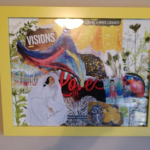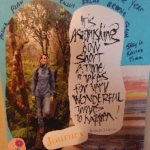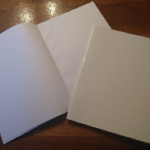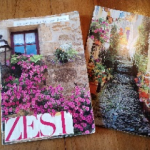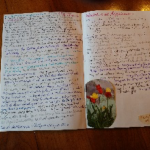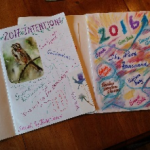In the past two days, I’ve had two separate requests to share my planning system. So here goes. Warning: This is not for the faint of heart!
I do believe many of us are searching for some “magic” – the one system that provides us focus, keeps us organized and helps us achieve all that we set out to do. And there are more than enough people who will claim they have the system for you. I smile as I think about the Franklin Covey folks who sold very expensive planning systems that were so complicated that it took a full day of training to learn how to use it and one had to purchase $200 worth of binders, paper and accessories.
My system has evolved over time and is a bit non-traditional. Yet, it works for me and it has, over time, enabled me to get and stay focused on the most important things, to track progress and to guide my activities over time. Because of this process, I feel like I continue to lead a richer and more fulfilling life and that the non-essential trivia continues to drop away.
I truly believe that “No One” size fits all. I’ve seen others do really well with other systems that when I tried them, left me uninspired, overwhelmed and doomed to fail. I’m not suggesting this will work for everyone. But I do suspect that you might do as I did, experiment with one of two of the elements and see if they work for you. If they do, great. If not, it was only an experiment.
A few disclaimers about some of my philosophical underpinnings:
- The plan is the beginning. Execution is essential. The plan is the path and the work is taking steps, day after day, on that path. After we dream big, we need to take those scary steps forward. Again. And again. And again.
- Keeping things front and center is critical. Part of execution is a realistic assessment of where you are and how your actions are contributing to the results you get. Mark progress. Reflect on what is working and what is not. Adjust real time.
- Think big about your life. Why not? Your whole life. Not just work. Think about your life over time. Never doubt that you can do amazing things – but know that you must first dream and then do.
Warning: My planning approach is non-traditional in that it is:
- Tiered – It starts with big, long range life goals and translates them into day to day actions
- Visual – Images speak to me in ways that words cannot. This is a system that uses both your right and your left brain.
- Eclectic – An eclectic combination of techniques I’ve learned here and there that, when combined for me, have enabled me create a vibrant and creative life
- Integrated – My goal is that my work and my life flow seamlessly together. I strive to look at my life as a whole that includes my professional work, my health and well-being, my relationships, my spirituality, my development, my space and my leisure.
The Process
-
Annually: Day of Discernment
Once a year I create a day of solitude in nature for myself. I find a place that is “off the grid” so that I’m not tempted to surf the web, text or do email. I find a place in nature – cabins in the woods are my favorite although water front works as well. And for a full 24 hours I relax, reflect, journal, hike, rest and plan in solitude. In this time I make an honest assessment of what is working in my life, what is not and where I am currently. I then dream of what could be; of what I’d like to create in my life. Always key themes emerge – and these are noted and honed over the time away. I then identify core intentions for the coming year. I call these HEART goals.
While I don’t have a rigid schedule on these expeditions, I’ve found that review and reflection tend to fill the first few hours. I’ll then break for a hike or meditation and then come back to finding my key themes. I’ll then break again – and often this is about bed time. After sleeping I’m usually getting more clarity on both themes and goals and I’ll capture them in words with a future visualization (see tools below) and a vision board. Again, I’ll break to enjoy the outdoors and let things settle – and upon my return I’ll create my visual intention book and yearly calendar (see tools below).
My primary focus on days of discernment are to be in flow. As such, there is not a rigid schedule. I’ll have burst of inspiration. I’ll take a nap. I’ll hit a wall and spend more time outside. I trust that I’ll get done what I need to with the time I have. More often than not, I find I accomplish more than I had ever imagined. Yet there have been times where I’ve not gotten to complete clarity – and I merely commit to continuing the work at home.
Ideally, after 24 to 48 hours (OK- sometimes I stay two nights), I walk away with these things (see tools below):
- Vison board
- Future visualization
- Visual yearly calendar
- Visual intention book
-
Quarterly: Half day of Assessment
Once a quarter, I set aside a few hours to reflect. I note progress I’ve made, what I’ve learned and any shifts I need to make as things have unfolded. Again I move from higher level intentions to more granular goals. If I’m crisper on my vision for myself, I often create a small vision board for the quarter. I update my white board that lists big projects, outcomes and action steps for each one. I look at financials and also calendar out bigger blocks of time for bigger projects.
-
Weekly: 20 Minutes of Must Dos
At the beginning of each week, I create a list of “must do’s” for the week. When I do this, I look ahead to the next 3-4 weeks to determine what I need to work on this week to be ready for a future week. This list is a list of deliverables that I need to complete in the course of the week. It is not a “granular” task list, so things like paying the bills or returning a call would not make this list. It includes things like: Prepare workshop. Submit XYZ proposal. Put together plan for Project X. Each of these items has any number of subtasks under them, which show up in my daily list.
-
Daily: 2 Minutes of Touch / Work the Plan
Remember that Visual Intention Book? I begin each work day by picking it up and paging through it. If I’ve done something toward that intention, I note it. If I’ve not advanced that intention, I make a mental note that I might need more focus there. Just the simple action of taking 2 to 3 minutes to pick the book up, page through it and make notes is a great focusing action.
Daily I create a work plan. I use a simple note pad that is 4” X 8”. I’ll put my list of appointments at the top and then my list of “to do’s” on the bottom. This is where the granular tasks show up, to make the call, pay the bill, submit the invoice. I like this size, because generally I find that I can accomplish what fits on this size of paper. My goal is to get things done off this list – and not to carry them over from day to day.
Once I have my list of “to do’s” – I’ll prioritize them in order of importance, listing them as 1,2,3, etc. and I tackle them in that order. This enables me to ensure the most important things get done and also eliminates the wasted time wondering what I should do next. I’ll lump together some of the administrative, less than 10 minute tasks, so that several tasks on my list might all be #6 – they are batched for efficiency. One of the last tasks I do every day is to create to “to do” list for the following day, so that I know what is going to happen and in what order.
I’ve included instructions and photos of each of the tools I use below. And I’ll repeat: This works for me. It may not work for you. But I will leave you with the thought that due to the process, I’ve managed to get the things that are most important to me done, with focus and a sense of grace.
The Tools
Future Visualization:
Write a story that takes place one year from now in the present tense. You are writing a story that assumes you have already achieved your vision.
- For example, you might start with: It is (insert the date a year from now) and I am (insert where you are and what you are doing).
- Stay in the present tense. Write as if all that you envision is actually occurring.
- Do not constrain yourself to what you believe is possible, based on today. Write about what you would like to have happen, even though you cannot see today how that might happen.
- Stay in the realm of possibility and positivity.
- The goal is to create a future story that is real to you. Spend your time dreaming, describing, and capturing. Spend no time editing or improving your writing – this is for your eyes only.
- Try to get at least 2 full pages of narrative.
Vision Board:
Detailed instructions can be found here. I’ve done big poster sized ones and ones on 8 ½ X 11 paper. All you need is the base (heavy stock paper), glue, magazines, scissors and some colorful markers.
Visual Yearly Calendar:
Post it makes a great wall sized calendar system. I lay out the upcoming year and block big things like vacations, project deliverables & deadlines, big events and travel. It becomes very easy to spot areas where you are over-booked. It enables you, in advance, to block time for some of the “non-work” things in advance.
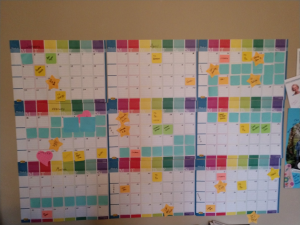
Visual Intention Book:
Craft stores and Amazon (of course) sells white blank books for less than $2.00. I use these to identify eight core intentions for the year. I design a cover using glue and magazine images (those more talented might draw). I then list my overarching intentions and devote two pages to each intention. I add images as appropriate but am careful to keep lots of room for writing, as this is the book I touch daily and note the progress I make.
Some examples of intentions I include are Collaborations, Give Back, Health & Happiness, Writing, Speaking, Travel and Growing my Business. This is a book that I touch daily and I mark all progress toward my intention with a very brief note (date and a word or two). This keeps my primary focus areas front and center – and allows me to both celebrate progress and get back on track if I am neglecting one area.
Quarterly White Board:
This is more traditional approach. I have a large white board in line of sight with my desk that lists major projects and what needs to happen in this quarter for each of them. Every quarter I assess, wipe it clean and start again!
Weekly List:
At the beginning of every week, I create a list of the key outcomes for the week. These are not detailed tasks – but deliverables. A presentation, a proposal, a workshop delivered. Typically I’ll have no more than 5 of these “bigger” weekly outcomes.

Daily Priorities:
A simple list of appointments and tasks. I list appointments at the top and list tasks as they pop into my head. At the beginning of the day, I review the list and order them, beginning with the most important. I then tackle them in that order.
Which of these different processes and tools will you try to use for 2018?

